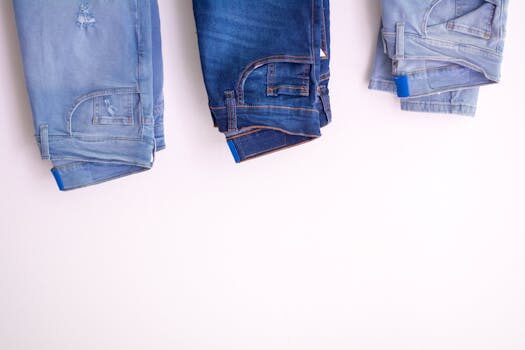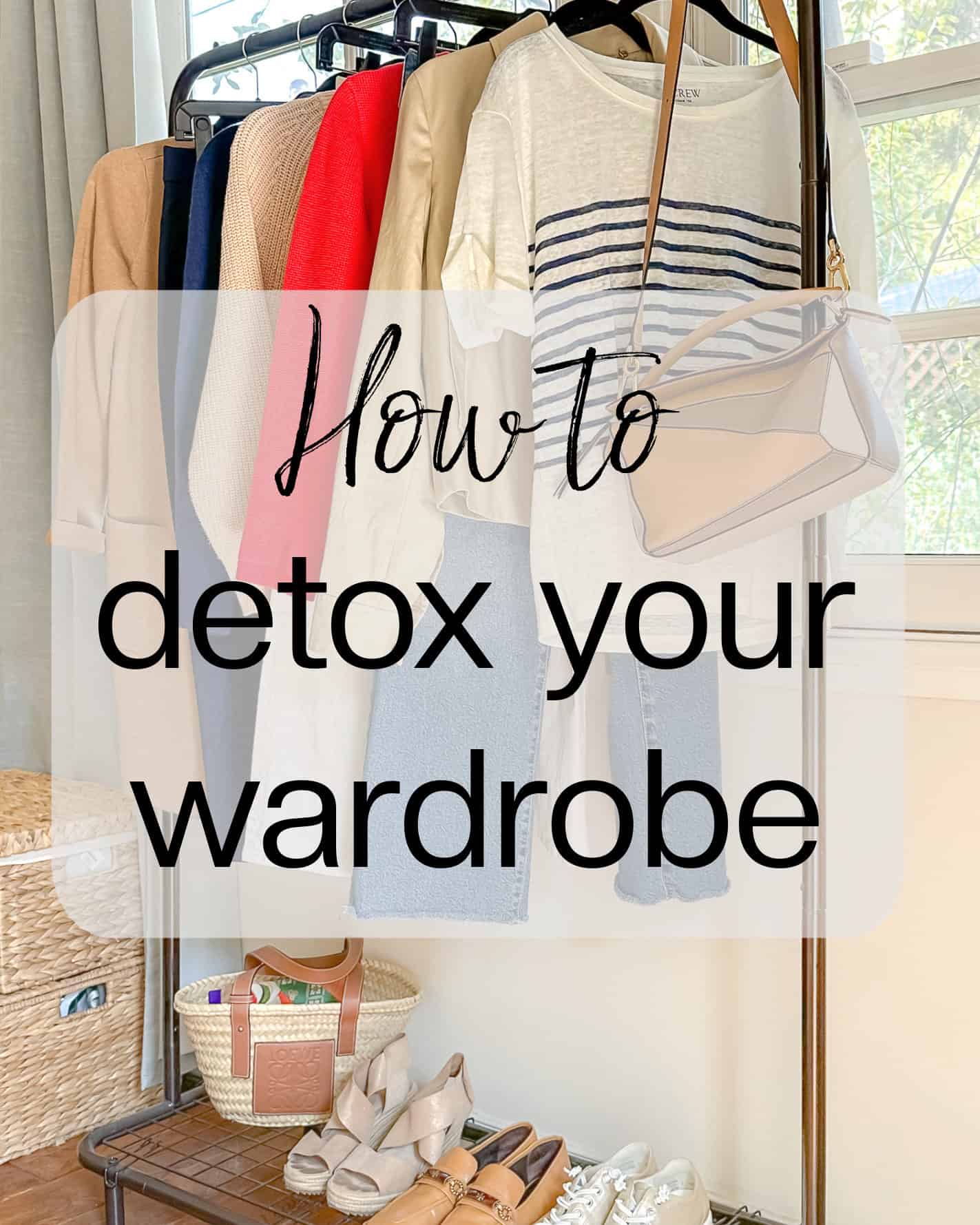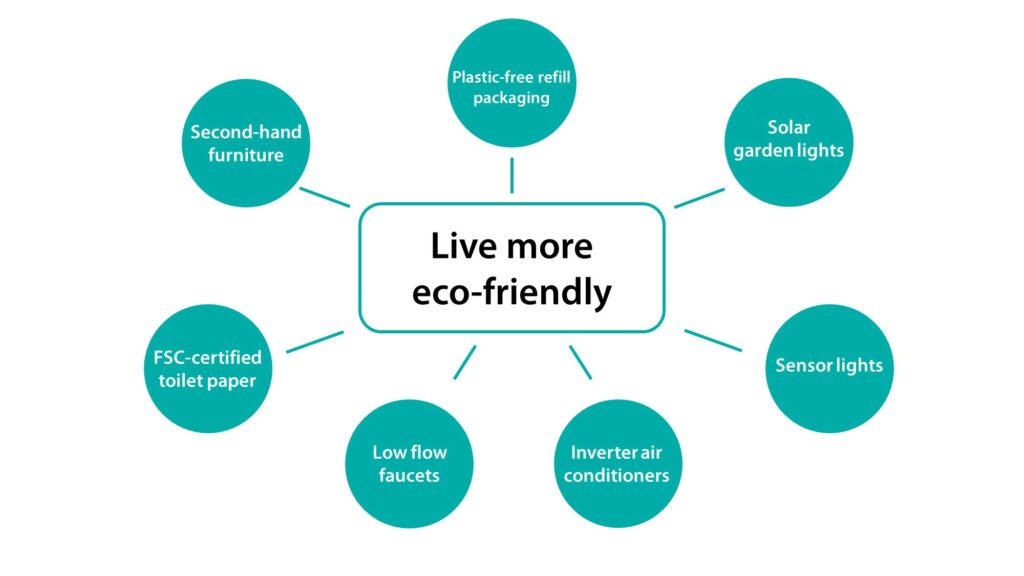If you’re looking to detox your wardrobe, you’ve come to the right place. In a world of fast fashion and synthetic materials, the clothes we wear can sometimes be a source of harmful toxins. But fear not, as there are natural clothing materials and laundry tips that can help keep these unwanted chemicals off your skin.
We often overlook the importance of what our garments are made from and how we care for them. Yet, these factors play a crucial role in our health and the environment. Detoxing your wardrobe is not only about making healthier choices for ourselves but also about adopting more sustainable practices.
How to Detox Your Wardrobe for a Healthier Life?
The journey toward a toxin-free closet starts with awareness. Begin by auditing your current wardrobe to identify items with high concentrations of synthetic fibers. Transitioning to materials like organic cotton, hemp, and wool is a significant first step as these natural fibers are breathable and free from harmful chemicals.
Moreover, when purchasing new clothing, look for transparency in manufacturing processes and consider the environmental footprint of the fabric. Brands that prioritize sustainability often use less water and energy in their production, contributing to a healthier wardrobe and planet.
The detox process should also include a shift in how we care for our clothes. Using eco-friendly detergents, avoiding chlorine bleach, and drying clothes in the fresh air are all methods that reduce chemical exposure. Furthermore, consider implementing a capsule wardrobe to not only minimize waste but also to streamline your style with high-quality, versatile pieces.

What Fabrics Should You Choose for a Safe Wardrobe?
When it comes to safe wardrobe choices, natural fabrics are your ally. Organic cotton is grown without toxic pesticides, making it a skin-friendly option. Hemp fabric is another excellent choice due to its durability and low environmental impact. Wool, especially from ethical sources, provides warmth and comfort without the need for chemicals.
However, not all natural fabrics are created equal. It’s essential to look for certifications like GOTS or OEKO-TEX, which guarantee that the textiles meet strict environmental and toxicological criteria. These certifications ensure that from the farming of the fibers to the finished product, your clothing is safe and sustainable.
How to Identify and Avoid Toxic Clothing?
Identifying toxic clothing can be tricky, but there are telltale signs. Watch out for synthetic fabrics like polyester, which may have been treated with harmful chemicals. Also, beware of items that have a chemical smell or are labeled as “wrinkle-free” or “stain-resistant,” as these features often indicate the presence of toxic finishes.
- Check the labels for fabric content and care instructions.
- Research the brands you buy from to understand their manufacturing processes.
- Avoid clothing with excessive packaging, as this can be a sign of synthetic protectants.
By being a conscious consumer and choosing to support brands that value safe production, you can significantly reduce the presence of toxins in your wardrobe.
What Are the Best Practices for Washing Your Clothes?
Washing your clothes safely is a pivotal aspect of maintaining a toxin-free wardrobe. Opt for eco-friendly detergents that are free from synthetic fragrances and harsh chemicals. Cold water washing not only conserves energy but also prevents the breakdown of fibers that can release microplastics into the environment.

- Use a gentle, natural laundry detergent.
- Rinse your clothes twice to ensure the removal of all detergent residues.
- Hang dry your clothes to avoid the harsh environment of a dryer.
- Avoid fabric softeners and dryer sheets, which can contain harmful chemicals.
How to Extend the Lifespan of Your Clothing Sustainably?
Extending the lifespan of your clothing sustainably is about care and repair. Instead of discarding garments at the first sign of wear, consider mending them. Simple sewing skills can save a piece from the landfill and extend its life.
Additionally, investing in timeless pieces rather than following fast fashion trends can lead to a more sustainable wardrobe. Quality garments may come with a higher price tag, but their longevity means less frequent replacements and a lower environmental impact over time.
What Certifications Indicate Non-Toxic Clothing?
When shopping for non-toxic clothing, certifications such as GOTS and OEKO-TEX offer a reliable indication of safety. The Global Organic Textile Standard (GOTS) is one of the leading textile processing standards for organic fibers, including ecological and social criteria. OEKO-TEX certification ensures that every component of the article, from the thread to the buttons, has been tested for harmful substances.
These certifications provide peace of mind that the clothing you’re purchasing is genuinely non-toxic and produced in a manner that’s better for both your health and the planet.
How to Transition to a Natural Clothing Wardrobe?
Transitioning to a natural clothing wardrobe doesn’t happen overnight. Start by integrating key pieces made of organic cotton, hemp, or wool. As you replace worn-out items, choose those with reputable certifications. Also, embrace second-hand shopping as a sustainable way to find quality, natural fiber clothing.

It’s not just about buying new—take care of what you already own. Properly maintaining your clothes by following the appropriate washing and storage instructions can prevent the need for frequent replacements, thus naturally detoxifying your wardrobe over time.
Before we delve into some frequently asked questions related to wardrobe detox, let’s take a moment to watch a video that provides additional insight into the topic.
Preguntas Relacionadas Sobre Como Desintoxicar Tu Guardarropa
How to Wash Clothes to Remove Toxins?
To effectively remove toxins from clothes, start by washing new garments before wearing them. This can help to diminish the chemical residue left from the manufacturing process. Additionally, using baking soda or white vinegar in your wash can help to neutralize chemicals and naturally soften your clothes without the use of synthetic softeners.
For a deeper cleanse, consider using specialized detergents designed to remove toxic residues. These can be particularly beneficial for items that come into close contact with your skin, such as underwear and bed linens.

Can Toxins in Clothing Be Washed Out?
While it’s possible to wash out some toxins, others may be more persistent due to the methods used during the clothing manufacturing process. It’s also important to recognize that some synthetic fibers can shed microplastics during washing, which is why opting for natural fibers is recommended.
Regular laundering with safe detergents and washing techniques can reduce the level of toxins in your clothes over time. However, starting with non-toxic, natural materials is the best preventative measure.
How to Detox Your Laundry?
Detoxing your laundry can have a significant impact on reducing toxins in your wardrobe. Switching to natural detergents, avoiding fabric softeners, and line drying are all effective strategies. It’s also worth exploring detergent alternatives, such as laundry balls or soap nuts, which offer a chemical-free way to clean your clothes.
Remember to clean your washing machine regularly to prevent the buildup of mold and detergent residue, which can contribute to the toxicity of your laundry.
Does Vinegar Remove Chemicals from New Clothes?
Yes, white vinegar is an excellent natural agent that can help remove chemicals from new clothes. Add half a cup of vinegar to your wash cycle to break down chemical residues. Vinegar also acts as a natural fabric softener and can prevent colors from fading.

For best results, let your clothes soak in a mixture of water and vinegar before washing. This pre-treatment can be particularly effective for items with strong chemical smells or stiff textures.
In conclusion, creating a toxin-free wardrobe is about making informed choices—from selecting natural fibers to adopting safer laundry practices. By following these tips and seeking out certifications that guarantee non-toxic production, we can protect our skin, our health, and our planet.
 Buying guide: what’s in a truly natural mattress and how do I find one?
Buying guide: what’s in a truly natural mattress and how do I find one?



